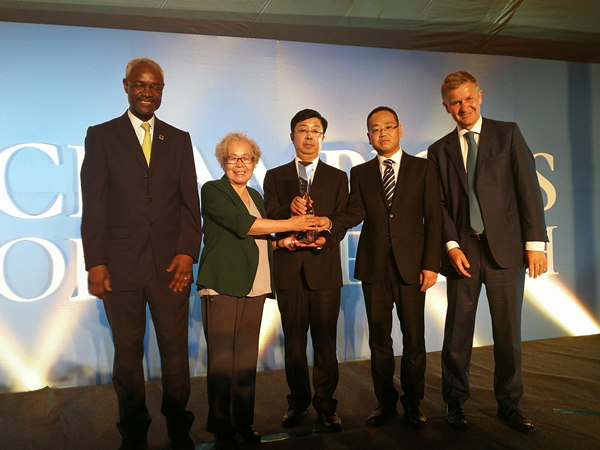

Trademark piracy is not a new issue in the intellectual property world.

A significant number of Chinese corporations, when trying to expand into overseas markets, are finding that someone else has pirated their trademarks.
In the 1980s, the trademark for the famous Chinese pharmaceutical company Tongrentang was pirated in Japan. It took more than 10 years for the Chinese firm to recover its trademark.
In 2005, China's television brand Hisense attracted headlines when the company and Bosch-Siemens settled a trademark dispute. Before that, Bosch-Siemens had registered the Hisense trademark in the European Union.
In 2006, a Shenzhen company registered more than 170 well-known Chinese brands such as LiNing and Xoceco in Hong Kong.
In April this year, a Munich court ruled against OKAI, a German food company, in a trademark lawsuit. The court ordered OKAI to stop infringing on the trademark of Wangzhihe, a well-known Chinese food brand.
According to some news reports, two individuals in Canada have applied for the registration of more than 52 trademarks related to Chinese brands in Canada.
Foreign companies have long complained about the piracy of their brands in China, but now things are changing.
According to statistics from the State Administration for Industry and Commerce, about 15 percent of well-known Chinese brands have been infringed overseas.
More than 80 Chinese trademarks were registered in Indonesia, nearly 100 in Japan and about 150 in Australia without the approval of the Chinese companies.
If the related Chinese companies want to use their trademarks in those overseas markets, they have to either change the trademarks or pay royalties to the foreign companies.
With Chinese companies riding the wave of overseas expansion, they are paying increasing attention to the protection of their intellectual property rights in overseas markets.
In 2005, I conducted a research survey by partnering with some foreign companies to create a list of "China's 500 Most Valuable Brands" that was published by the World Brand Laboratory.
The research showed that 46 percent of the Chinese brands had yet to be registered in the United States, 50 percent had yet to be registered in Australia and as approximately 76 percent had not registered in the European Union.
Moreover, 15 percent of these trademarks were registered by a third party -- not the legitimate owner in China.
The robust Chinese economy and the country's status as a world manufacturing hub have seen China-made products being sold everywhere in the world.
Some Chinese brands such as Lenovo, Haier and Huawei are enjoying strong recognition in overseas markets.
And some have been falling victim to trademark piracy.
There are several reasons why Chinese brands are becoming the target of international trademark piracy.
First, many Chinese corporations are not aware of the importance of protecting their trademarks internationally.
Sometimes the overseas distributors of Chinese firms register the Chinese trademarks just because they want to be the selling agent of the Chinese companies. In that case, it will not be difficult for the Chinese companies to get back their trademarks.
However, in some cases the foreign companies or individuals register the Chinese trademarks in a bid to make a profit.
They want to either sell the trademarks or charge the Chinese companies that want to expand to the overseas markets.
In that case, Chinese companies have to pay a hefty price to get their trademarks back.
Third, the local companies notice that Chinese brands have a high reputation in a certain region.
These companies will register the brands as their own in that region. Under this circumstance, the Chinese company might have to change the brand. Changing brands mean the Chinese company might have lost the market there.
Four, the local competitor might register the brands to set up an obstacle for Chinese enterprises.
If the competitor wants to exclude the Chinese company from entering a certain market, then he might register the Chinese trademark in advance.
Under this circumstance, the Chinese enterprise might be excluded from the relevant market or be forced to collaborate with the local competitor with a disadvantageous agreement -- as was the case for Hisense vs Bosch-Siemens.
(To be continued )
Li Yongbo is a trademark lawyer with Beijing Unilaten Attorneys at Law.
Editor's note: The IPR Special is sponsored by the State Intellectual Property Office and published by China Business Weekly. To contact the Intellectual Property Office, the IPR Special hotlines are 8610-64995422 or 8610-64995826, and the e-mail address is ipr@chinadaily.com.cn.
(China Daily 08/31/2009 page9)













